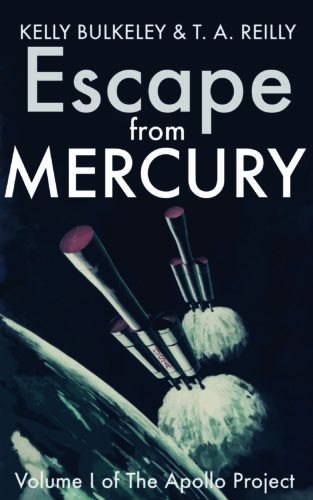 Earlier this week I attended the preseason basketball game between the Portland Trailblazers and the Sacramento Kings. Although the Blazers played with lots of energy, the Kings beat them handily, 107-93. That night (it was a Monday), I had the following dream:
Earlier this week I attended the preseason basketball game between the Portland Trailblazers and the Sacramento Kings. Although the Blazers played with lots of energy, the Kings beat them handily, 107-93. That night (it was a Monday), I had the following dream:
Fertilizing the Basketball Court
Lots of people are engaged in some activity, trying to set up a sports game, on a basketball court…. They are sweeping and spreading lots of soil onto the court…. To fertilize it?…. I am confused, but I go along with it, curious to see where it leads….
(October 11, 2021)
This is the first basketball dream of the 2021-2022 season, and it offers a simple and actually quite beautiful metaphor for the meaning of the preseason. Of course, it might seem at first glance like nothing more than typical dream nonsense, the random combination of two incidents from my previous day—watching the basketball game, and spreading compost in my yard, which I did in fact do earlier that morning. The dream puts these two bits of “day residue” together in a way that makes no logical sense. Spreading dirt on a basketball court in the way it was spread in my yard would prevent a game from going forward, not help it along. But this is a case where we need to put aside a literal reading of dreams and think of them in metaphorical terms. As a metaphor, the soil may express something else, a meaning related to its literal qualities but connecting those qualities to a non-literal situation.
That sounds abstract, I know, so here’s a practical way to bring out the metaphorical dimensions of a dream. I call it asking questions of specification. Why soil? Of all the things my dream could have portrayed as being spread across the basketball court, why this and not something else? It could have been sand, or pennies, or ping pong balls—but it wasn’t any of those, it was specifically soil. What are the qualities of soil, of composting earth, that might metaphorically relate to a preseason basketball game?
Just as my dream might seem trivial and insignificant, the game that night could be considered trivial and insignificant, too. Only one of the Blazers’ regular starters (Jusuf Nurkic) even played, while Damien Lillard, C.J. McCollum, Norman Powell, and Robert Covington, Jr., sat out the whole contest. The Kings pretty much dominated at both ends of the court, with the Blazers making 27 turnovers and shooting only 21% from 3-point land. Not a pretty game. But was it meaningless? Not to the bench guys who did play, and played hard, every one of them striving to use his minutes on the court to learn, grow, and demonstrate to the coaches how he can contribute to the team. They were playing as energetically as they could, flashing their best moves and testing their newest skills. Pre-season games are vital for these players’ developmental progress, and beneficial for the whole team’s long-term success.
This suggests one aspect of the dream’s metaphor: Pre-season games are like composting a garden. And, composting a garden is like getting a sports team ready for a new season. They’re both about nourishing, preparing, getting ready for big moves and expansive growth. Fertilizing the future, empowering the fullest expression of latent potentials, fueling the competitive fires that animate all forms of life.
The concept of a season is another metaphorical link. Both gardens and basketball teams follow a regular annual cycle of activity and rest, with transitional states between. With gardens and Nature in general, the coming of winter brings a lessening of external activity and an inward focus on survival through the dark and cold, and preparing for new growth when light and warmth return. Basketball runs on an opposite (complementary?) cycle, with activities turning indoors and revving up just as the days shorten and chill of winter approaches. To understand the rhythms of a season for a garden or a basketball team is to understand the distinct and essential value of each stage in the cycle, and how that specific stage adds to the ultimate health, strength, and dynamism of the overall process.
And, as a further metaphorical extension, compost doesn’t smell great. But the stinky smell is actually a good thing! The strong, earthy odors of a well-fertilized garden—and the turnovers and missed-3s in a hard-fought preseason game—are all part of a deeper, long-term growth process. In basketball, it’s part of the magical transformation of a disparate group of individual players into a cohesive, high-performing, championship-level team.
And how good it will smell when the garden blooms again and the regular season begins…
About the Basketball Dream Diaries: Dreams about sports have been a recurrent theme in my life since childhood. Since moving to Portland, Oregon in 2010, I have become a big fan of the city’s NBA basketball team, the Trailblazers, and my dreams have reflected that interest with several references to the team, the players, and their interactions with the rest of the NBA. I’ve attended several games at Moda Center, and had a lot of fun each time. I have also noticed how the intense stimulation of the games, starting at 7 pm in the evening and going till 9:30 or 10, has a direct impact on my sleep and dreaming later that night.
This year, I’m unbelievably fortunate to have season tickets to the Trailblazers home games. In anticipation of possible basketball dreams to come, I’m starting this chronicle to track the influence of the Blazers’ season on my dreams, and to see how my dreaming imagination evaluates and interprets the Blazers’ performance this year. It’s going to be color commentary from the unconscious. A surrealist angle on the NBA. A self-experiment in sports-mediated dream incubation. And an open door and welcome mat for the metaphor-generating wizard of my sleeping mind.

 Despite the many crises afflicting the world right now, or perhaps because of them, my Muses have been quite active recently. Urgent, even. They have inspired several writing projects I hope to share soon.
Despite the many crises afflicting the world right now, or perhaps because of them, my Muses have been quite active recently. Urgent, even. They have inspired several writing projects I hope to share soon.  Escape from Mercury – a science-fiction novel, co-edited with T.A. Reilly, in production with a private publisher, to be released on 1/1/22 at 13:00 ICT. The novel portrays an alternate history in which NASA launches a manned mission to the planet Mercury on December 3, 1979, using Apollo-era rocketry that was specifically designed for post-Lunar flights. In the present “real” timeline, those plans were abandoned. The novel reimagines the US space program continuing onward and aggressively pushing beyond the Moon, and suddenly discovering dimensions of our interplanetary neighborhood unforeseen by any but the darkest of Catholic demonologists. “The Exorcist in Space” is the tagline.
Escape from Mercury – a science-fiction novel, co-edited with T.A. Reilly, in production with a private publisher, to be released on 1/1/22 at 13:00 ICT. The novel portrays an alternate history in which NASA launches a manned mission to the planet Mercury on December 3, 1979, using Apollo-era rocketry that was specifically designed for post-Lunar flights. In the present “real” timeline, those plans were abandoned. The novel reimagines the US space program continuing onward and aggressively pushing beyond the Moon, and suddenly discovering dimensions of our interplanetary neighborhood unforeseen by any but the darkest of Catholic demonologists. “The Exorcist in Space” is the tagline. 2020 Dreams – a digital project co-authored with Maja Gutman, under contract with Stanford University Press as part of their new Digital Projects Program. We are looking at a large collection of dreams that people experienced during the year 2020, and using a variety of cutting-edge tools of data analysis and visualization to highlight patterns in the dreams and their meaningful connections to major upheavals in collective life–the COVID-19 pandemic, environmental disasters, protests for social justice, and the US Presidential election. We have just reached an agreement with the Associated Press (AP) to use their news data from 2020 as our waking-world comparison set. Our hope is to expand on the findings of Charlotte Beradt and others who have shown how dreams can reflect the impact of collective realities on individual dreams, thus providing a potentially powerful tool of social and cultural analysis.
2020 Dreams – a digital project co-authored with Maja Gutman, under contract with Stanford University Press as part of their new Digital Projects Program. We are looking at a large collection of dreams that people experienced during the year 2020, and using a variety of cutting-edge tools of data analysis and visualization to highlight patterns in the dreams and their meaningful connections to major upheavals in collective life–the COVID-19 pandemic, environmental disasters, protests for social justice, and the US Presidential election. We have just reached an agreement with the Associated Press (AP) to use their news data from 2020 as our waking-world comparison set. Our hope is to expand on the findings of Charlotte Beradt and others who have shown how dreams can reflect the impact of collective realities on individual dreams, thus providing a potentially powerful tool of social and cultural analysis. The Scribes of Sleep: Insights from People Who Keep Dream Journals – a non-fiction book in psychology and religious studies. Currently being written, under contract with Oxford University Press, likely publication in early 2023. This book brings together many sources of research about people who record their dreams over time, and what they learn from the practice. Seven historical figures are the primary case studies in the book: Aelius Aristides, Myoe Shonin, Lucrecia de Leon, Emanuel Swedenborg, Benjamin Bannecker, Anna Bonus Kingsford, and Wolfgang Pauli. A close look at their lives, their dreams, and their creative works (religiously, artistically, scientifically) suggests that keeping a dream journal seems to appeal to people with a certain kind of spiritual attitude towards the world. The stronger argument is that keeping a dream journal actively cultivates such an attitude….
The Scribes of Sleep: Insights from People Who Keep Dream Journals – a non-fiction book in psychology and religious studies. Currently being written, under contract with Oxford University Press, likely publication in early 2023. This book brings together many sources of research about people who record their dreams over time, and what they learn from the practice. Seven historical figures are the primary case studies in the book: Aelius Aristides, Myoe Shonin, Lucrecia de Leon, Emanuel Swedenborg, Benjamin Bannecker, Anna Bonus Kingsford, and Wolfgang Pauli. A close look at their lives, their dreams, and their creative works (religiously, artistically, scientifically) suggests that keeping a dream journal seems to appeal to people with a certain kind of spiritual attitude towards the world. The stronger argument is that keeping a dream journal actively cultivates such an attitude…. Here Comes This Dreamer: Practices for Cultivating the Spiritual Potentials of Dreaming – a non-fiction book addressed to general readers interested in deeper explorations of their dreaming. Currently being written, under contract with Broadleaf Books, likely publication in the latter part of 2023. The challenge here, both daunting and exciting, is explaining the best findings from current dream research in terms that “curious seekers” will find meaningful and personally relevant. The book will have three main sections: 1) Practices of a Dreamer, 2) Embodied Life, and 3) Higher Aspirations. The title of the book signals a key concern I want to highlight: to be a big dreamer, like Joseph in the Bible (Gen. 37:19), can be amazing and wonderful, but it can also be perceived by others as threatening and dangerous. Sad to say, the world does not always appreciate the visionary insights of people who naturally have vivid/frequent/transpersonal dreams. I want to share what I hope are helpful and reassuring ideas about how to stay true to your innate dreaming powers while living in a complex social world where many people are actively hostile to the non-rational parts of the mind.
Here Comes This Dreamer: Practices for Cultivating the Spiritual Potentials of Dreaming – a non-fiction book addressed to general readers interested in deeper explorations of their dreaming. Currently being written, under contract with Broadleaf Books, likely publication in the latter part of 2023. The challenge here, both daunting and exciting, is explaining the best findings from current dream research in terms that “curious seekers” will find meaningful and personally relevant. The book will have three main sections: 1) Practices of a Dreamer, 2) Embodied Life, and 3) Higher Aspirations. The title of the book signals a key concern I want to highlight: to be a big dreamer, like Joseph in the Bible (Gen. 37:19), can be amazing and wonderful, but it can also be perceived by others as threatening and dangerous. Sad to say, the world does not always appreciate the visionary insights of people who naturally have vivid/frequent/transpersonal dreams. I want to share what I hope are helpful and reassuring ideas about how to stay true to your innate dreaming powers while living in a complex social world where many people are actively hostile to the non-rational parts of the mind.  People make many strange and unexpected discoveries when they begin exploring their dreams. Of these discoveries, perhaps the most surprising is an uncanny encounter with images, themes, and energies that can best be described as spiritual or religious. It’s one thing to realize you have selfish desires or aggressive instincts; it’s another thing entirely to become aware of your existence as a spiritual being. Yet that is where dreams seem to have an innate tendency to lead us—straight into the deepest questions of human life, questions we find at the heart of most of the world’s religious traditions.
People make many strange and unexpected discoveries when they begin exploring their dreams. Of these discoveries, perhaps the most surprising is an uncanny encounter with images, themes, and energies that can best be described as spiritual or religious. It’s one thing to realize you have selfish desires or aggressive instincts; it’s another thing entirely to become aware of your existence as a spiritual being. Yet that is where dreams seem to have an innate tendency to lead us—straight into the deepest questions of human life, questions we find at the heart of most of the world’s religious traditions.
 Dreams with explicitly sexual and/or violent interactions tend to get the most attention, but dreams actually tend to have surprisingly high proportions of friendly content, too. According to an analysis of the nearly 35,000 dream reports collected in the Sleep and Dream Database, 47% of the women’s dreams have at least one reference to a friendly social interaction (the most used words: friend, friends, boyfriend, help, party, love), as do 36% of men’s dreams (most used words: friend, friends, girlfriend, help, love, party. For both genders, those figures are greater than the combined percentages for sexual interactions (4% for women, 6% for men) and physically aggressive interactions (15% for women, 22% for men). If we add in non-physical aggressions (for example, saying or thinking mean things about a person), the relative proportions change, but the key fact remains: Friendly social interactions are a prominent feature of the content of most people’s dreams. If dreams offer a “royal road to a knowledge of the unconscious mind,” as Sigmund Freud famously claimed in The Interpretation of Dreams (2nd ed.), giving evidence of our deepest sexual and aggressive instincts, then dreams also provide evidence of our friendly, prosocial instincts.
Dreams with explicitly sexual and/or violent interactions tend to get the most attention, but dreams actually tend to have surprisingly high proportions of friendly content, too. According to an analysis of the nearly 35,000 dream reports collected in the Sleep and Dream Database, 47% of the women’s dreams have at least one reference to a friendly social interaction (the most used words: friend, friends, boyfriend, help, party, love), as do 36% of men’s dreams (most used words: friend, friends, girlfriend, help, love, party. For both genders, those figures are greater than the combined percentages for sexual interactions (4% for women, 6% for men) and physically aggressive interactions (15% for women, 22% for men). If we add in non-physical aggressions (for example, saying or thinking mean things about a person), the relative proportions change, but the key fact remains: Friendly social interactions are a prominent feature of the content of most people’s dreams. If dreams offer a “royal road to a knowledge of the unconscious mind,” as Sigmund Freud famously claimed in The Interpretation of Dreams (2nd ed.), giving evidence of our deepest sexual and aggressive instincts, then dreams also provide evidence of our friendly, prosocial instincts. New technologies are making it possible to use brain data to create video reconstructions of people’s dreams while they sleep. Is this thrilling, terrifying, or both?
New technologies are making it possible to use brain data to create video reconstructions of people’s dreams while they sleep. Is this thrilling, terrifying, or both? Hitting, fighting, chasing, shooting, killing—these are not only common themes in the news each day, they are also recurrent features of our dreams at night. Few studies have focused specifically on aggression in dreaming, even though Sigmund Freud, the founder of psychoanalysis, claimed that “the inclination to aggression is an original, self-subsisting instinctual disposition in man” (Civilization and its Discontents, 1930). A combination of old and new methods of research can shed light on how this primal instinct plays out in our dreams.
Hitting, fighting, chasing, shooting, killing—these are not only common themes in the news each day, they are also recurrent features of our dreams at night. Few studies have focused specifically on aggression in dreaming, even though Sigmund Freud, the founder of psychoanalysis, claimed that “the inclination to aggression is an original, self-subsisting instinctual disposition in man” (Civilization and its Discontents, 1930). A combination of old and new methods of research can shed light on how this primal instinct plays out in our dreams.